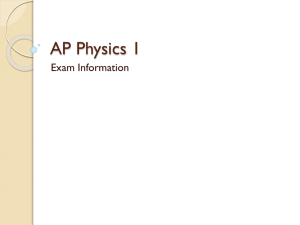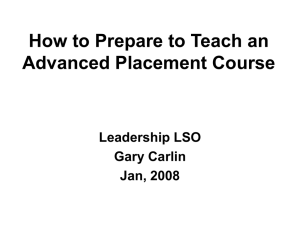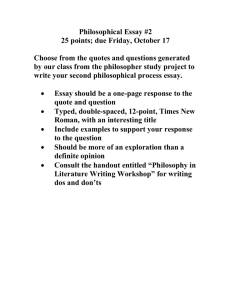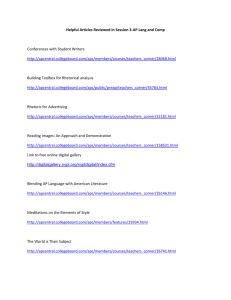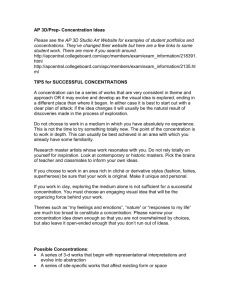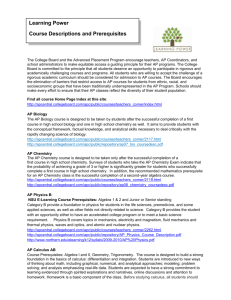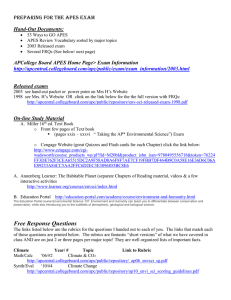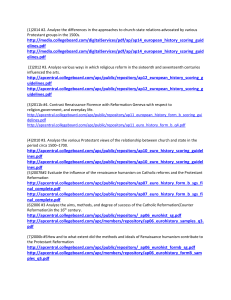AP® Art History, 2012-2013 Instructor
advertisement
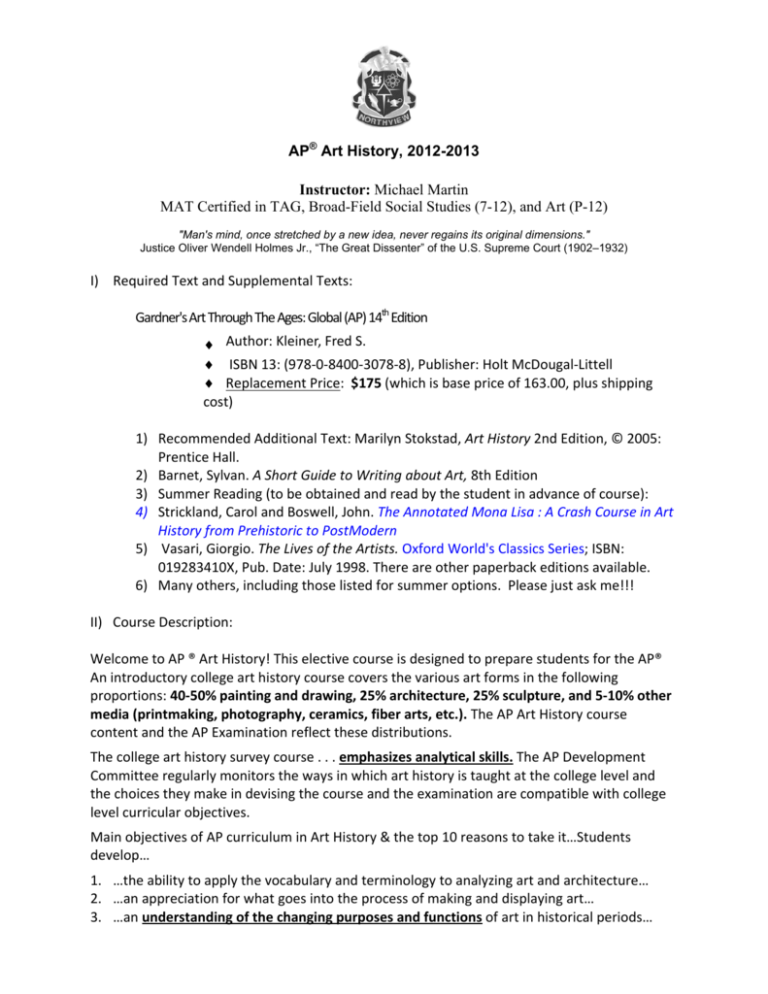
AP® Art History, 2012-2013 Instructor: Michael Martin MAT Certified in TAG, Broad-Field Social Studies (7-12), and Art (P-12) "Man's mind, once stretched by a new idea, never regains its original dimensions." Justice Oliver Wendell Holmes Jr., “The Great Dissenter” of the U.S. Supreme Court (1902–1932) I) Required Text and Supplemental Texts: Gardner's Art Through The Ages: Global (AP) 14th Edition Author: Kleiner, Fred S. ISBN 13: (978‐0‐8400‐3078‐8), Publisher: Holt McDougal‐Littell Replacement Price: $175 (which is base price of 163.00, plus shipping cost) 1) 2) 3) 4) 5) 6) Recommended Additional Text: Marilyn Stokstad, Art History 2nd Edition, © 2005: Prentice Hall. Barnet, Sylvan. A Short Guide to Writing about Art, 8th Edition Summer Reading (to be obtained and read by the student in advance of course): Strickland, Carol and Boswell, John. The Annotated Mona Lisa : A Crash Course in Art History from Prehistoric to PostModern Vasari, Giorgio. The Lives of the Artists. Oxford World's Classics Series; ISBN: 019283410X, Pub. Date: July 1998. There are other paperback editions available. Many others, including those listed for summer options. Please just ask me!!! II) Course Description: Welcome to AP ® Art History! This elective course is designed to prepare students for the AP® An introductory college art history course covers the various art forms in the following proportions: 40‐50% painting and drawing, 25% architecture, 25% sculpture, and 5‐10% other media (printmaking, photography, ceramics, fiber arts, etc.). The AP Art History course content and the AP Examination reflect these distributions. The college art history survey course . . . emphasizes analytical skills. The AP Development Committee regularly monitors the ways in which art history is taught at the college level and the choices they make in devising the course and the examination are compatible with college level curricular objectives. Main objectives of AP curriculum in Art History & the top 10 reasons to take it…Students develop… 1. …the ability to apply the vocabulary and terminology to analyzing art and architecture… 2. …an appreciation for what goes into the process of making and displaying art… 3. …an understanding of the changing purposes and functions of art in historical periods… 2 4. …the ability to analyze works of art in context of historical evidence and interpretation, in the contexts of sensitive social and cultural “issues” such as politics, religion, patronage, gender, and ethnicity. 5. …an understanding of the cross‐cultural and globalized nature of art as a medium of communication. 6. …the ability to recognize ART CONTENT THEMES, and perform higher order thinking and articulate historical concepts in analytical or comparative ways. Exam in the General Survey of Global Art History: Like the introductory college course sequence in Art History, the AP® Art History course introduces students to significant art and architecture across cultures, from the Paleolithic Era to the Present. An emphasis will be placed on identifying and interpreting works in light of the perspectives of the civilizations that produced them. We consider the politics, religion, patronage, and function of art in the “Western Canon,” and in art Beyond European tradition. Roughly 20% of the instruction and assessment for this course includes units on “Art Beyond Europe” (labeled “ABE” Art for future reference). With instructor guidance and supplements, students will work on their own creative performance projects and presentations for ABE art. For the art of ancient and modern India, China, Japan, Southeast Asian, and African cultures, we will draw parallels in their motivations using, for example, images of the divine and sacred spaces, and the religious, philosophical or literary traditions, and whether or not these be Pagan, Animistic, Buddhist, Hindu, Islamic, Judaic, or Christian. Students will compare previously examined images to new images, compare and contrast at any given point to parallel any cross‐cultural currents and concepts. There is an emphasis on images and philosophical traditions of the EAST and the WEST and content of two sides of the world or two cultures could be simultaneously compared for example, as they are roughly parallel movements in chronological history, and in their philosophical approaches to life. Addendums to the Art History Syllabus 2012‐13 1. What will students do; and, how will students learn: In abundant reading and responding (verbal and written), students will analyze and interpret: a. Technical and style developments are related to developments in history and archeology and to primary source documents at that point in history. In this way APAH is like a review of World History. b. We relate art and artifacts to the historical contexts of art making; i. The social, cultural, economic and political histories around art; ii. The patronage systems that have supported art production. c. By interpreting the artworks in their contexts, it is hoped that any AP Art History student 2. The successful student would be able to score a “4 or 5” on the AP Art History Exam. Students should know in advance that it is difficult to achieve a high score on this AP® exam. As students write in‐depth. 3 3. Essay responses to specifically worded discussion questions, they will be required to: a. Make discrete factual distinctions between and identifications of art works. b. Compare and‐or contrast works, and focus their specific responses to the exact question. Wording of the question and what you are given is KEY. c. No prior experience in studio art‐making or art history is assumed. However, all students are asked to take the AP Art History Exam in May. In order to score a 4 or 5 on the AP Art History Exam, students will need to demonstrate high level of commitment to this course and its academic rigor. The course must move at a very rapid pace to cover the time span. One class absence could mean missing an entire chapter! 4. Parent/teacher communication: Communication with parents about academic progress, behavior and/or attendance is welcomed and will be handled by phone, mail, conference, or a combination of these as the need arises. Home Access Center (HAC) is available for the use of all parents in monitoring a student’s academic progress, attendance, or behavior. Please call or visit the main office (770‐497‐3828) for more information, or to visit front desk to retrieve your students HAC Code. 5. Make‐Up Work: Make‐up work is permitted in accordance with the policies in place at Northview, and in Fulton County per the Student Handbook. Specifically, following an absence, it is the student's responsibility to contact his/her teachers to arrange for make‐up work.* *Assignments made prior to the absence, including tests/quizzes scheduled for the day of the return are generally due upon the student's return. If a student is absent on the day of a pre‐ announced test or quiz, then he or she will be expected to take it in on the day of return. For homework assignments given when student is OUT, the student is given the same number of days as the absence, not including the day of return, to complete the assignments. For unexcused absences, late work, or late make‐up work: In all three of these circumstances, the policy of the social studies department on late work will apply here as well, which is: Students will be required to submit work on the due date. Late work will be accepted for only 1 day after the due date, and is counted 30% off.* On any day after that first day grace period, your grade would start at a maximum of 50%, with your opportunity to turn in work beyond the first 24 hours grace based on my discretion, and a case‐by‐case evaluation of the circumstances. 6. Extra Help: I am available in the TAG Office, 522, for extra help and questions at 8am. Additional times may be available by appointment, specifically to: a. ‐‐ stimulate interest and enthusiasm b. ‐‐ begin to get students thinking (broadly!) as viewers with art interest, and to some initial degree as historians and critics c. ‐‐ encourage students to begin to get a very broad overview ‐‐ that is, to scope out the range of our study for the year d. ‐‐ encourage students to begin to identify areas of personal interest 4 Important Reminders about the 2012‐13 AP Art History Exam Beginning with the 2012 AP Art History Exam administration: • Five‐minute essay questions will no longer be included on the AP Art History Exam. • Section II, Part A, will include two 30‐minute essay questions. • Section II, Part B, will include six 10‐minute essay questions, based on color images and/or text. For complete details, see: http://apcentral.collegeboard.com/apc/public/exam/exam_information/2053.html Beginning with the May 2011 AP Exam administration, there was a change to the way AP Exams are now scored. Total scores on the multiple‐choice section are now based on the number of questions answered correctly. Points are no longer deducted for incorrect answers and, as always, no points will be awarded for unanswered questions. For complete details, see: http://apcentral.collegeboard.com/apc/public/courses/212187.html Other helpful links: AP Art History Course Description http://apcentral.collegeboard.com/apc/public/repository/ap‐art‐history‐course‐ description.pdf AP Art History Course Home Page on AP Central http://apcentral.collegeboard.com/apc/public/courses/teachers_corner/2177.html

